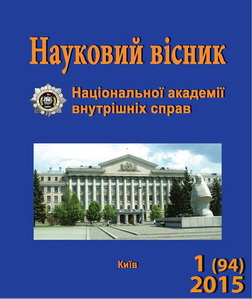Еvolution of analysis of criminality cause theories in 18th–19th centuries
Keywords:
evolution, analysis, theory, cause, crime, criminality
Abstract
Problems of criminality cause are crucial in criminology. Solutions provided for these problems define the scientific aspect of the criminological theory and its development. As a complex phenomenon criminality can be specified as a result of combined interaction of relevant circumstances, factors and reasons. It must be noted that criminology defines the causality category as one of its crucial notions due to the fact that criminality and its cause are the main elements of criminological subject and complex research of criminal offence requires identification of maximum number of circumstances defining the content and structure of examined phenomenon. In other words analysis of basic provisions of the criminality cause theories is one of the most relevant issues. But the analysis itself requires preliminary research to be done concerning its evolution through different historic periods (starting from 18th century) in order to define its modern condition. The absence of such type of research stipulates this issue to be analyzed. Nature of criminality cause as social-legal phenomenon has been neglected or rejected for decades in the developed socialism reality. Capitalist and socialist systems provide different approaches to the criminality cause study. It was stated that criminality is reproduced only within the capitalist community and it will never be completely eliminated without disposal of relevant social relationship. Social and economic factors included private property, professional exploitation, unemployment; the main ideological factor stipulated superiority of the individualistic ideology and psychology. These factors were thought to be the most influential ones concerning criminality and completely eliminated by the socialist system. Ideology was considered to be the defining concept. The main causes of criminality were identified as historical background of the social phenomena; discrepancy between conscience and reality which resulted in archaic features of behavior and mentality; influence of antagonist capitalist social system existing synchronously with socialism.Downloads
Download data is not yet available.
Abstract views: 41 PDF Downloads: 68
How to Cite
[1]
Nezhurbida, S. 1. Еvolution of analysis of criminality cause theories in 18th–19th centuries. Scientific Herald of the National Academy of Internal Affairs. 94, 1 (1), 269-277.
Issue
Section
Historical aspects
- Authors reserve the right to authorship of their own work and transfer to the magazine the right of the first publication of this work under the terms of the Creative Commons Attribution License, which allows other persons to freely distribute published work with mandatory reference to authors of the original work and the first publication of an article in this magazine.
- Authors have the right to enter into separate additional agreements on non-exclusive dissemination of the work in the form in which it was published in the journal (for example, to post an article in the institution's repository or to publish as part of a monograph), provided that the link to the first publication of the work in this journal is maintained.
- The journal's policy allows and encourages the posting of articles by authors on the Internet (for example, in electronic storehouses of institutions or on personal websites), both before the submission of this manuscript to the editorial office and during its editorial processing, as this contributes to the creation of a productive scientific discussion and positively affects the efficiency and dynamics of citing the published work.




